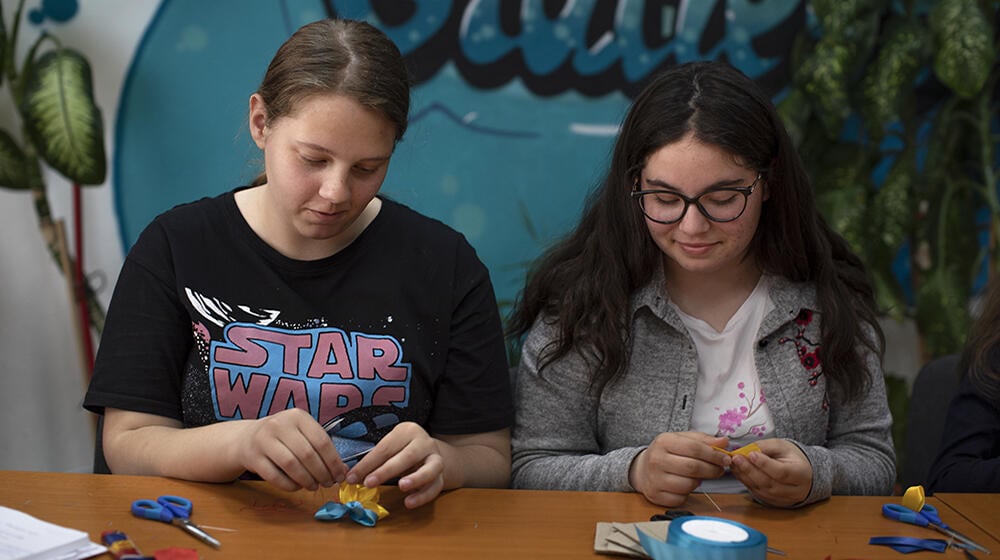“Art helps me cope with the trauma,” says Sabina, 18, from Melitpol, southeastern Ukraine, a city that is currently under Russian occupation. Sabina lost friends in the war. Today she lives with her family in Gratiesti village, close to Chisinau, the capital of Moldova, and volunteers and teaches art therapy at one of the 44 youth centres across the country that UNFPA supports.
The youth centre in Gratiesti has opened its doors to dozens of new youth volunteers in the past few months, many of them from Ukraine.
“When I moved to Gratiesti, I didn’t know anyone,” recalls Sabina. “I was invited to volunteer at the school my younger brother is now attending, where I organized an art session. The class liked it so much that the teacher suggested I visit a youth centre and volunteer on a regular basis.”
Gratiesti youth centre is where Sabina met Moldovan, Elena, 15, and they are now good friends. “We bonded immediately, she is my pillar of strength,” says Sabina. “We like doing the same things. We both like art and being in nature.”
On Saturdays, Sabina and Elena gather a group of Moldovan and Ukrainian youth at the centre. “Our peers need new friends and positive vibes,” says Elena, speaking of the many young people who have suddenly found their lives, hopes and dreams upended by the war. At the centre they talk, draw and express themselves through art.
“I am not the only one who lost friends or family in the war. Many of the young refugees here are struggling with stress and depression,” explains Sabina. “Art therapy helps us all to cope with our pain, the injustice of losing friends and normal life.”
The youth centre in Gratiesti, which has been open for more than 20 years, is part of a network of youth centers across the country visited by 30,000 young people each year. Since the influx of refugees into Moldova, the centres have expanded their activities, initiating new clubs to help young refugees from Ukraine integrate into local communities, and promote solidarity, and importantly hope.
Around 20 young people visit the centre in Gratiesti daily, and around half, like Masha, 17, who fled Avgustovka in the Odessa region, are from Ukraine. Before the war started Masha was looking forward to celebrating her high school graduation with her friends. Today, that normality seems like a faraway dream, but she is continuing her education at the youth centre, which now has a computer lab to support distance learning for those refugees in need. “I want to study Criminal Science at a Ukranian university,” she says with determination. “And I am hopeful that it will be in the fall.”


